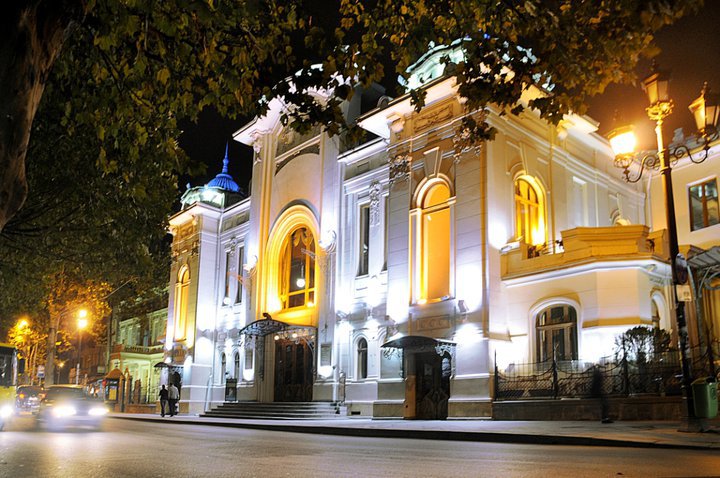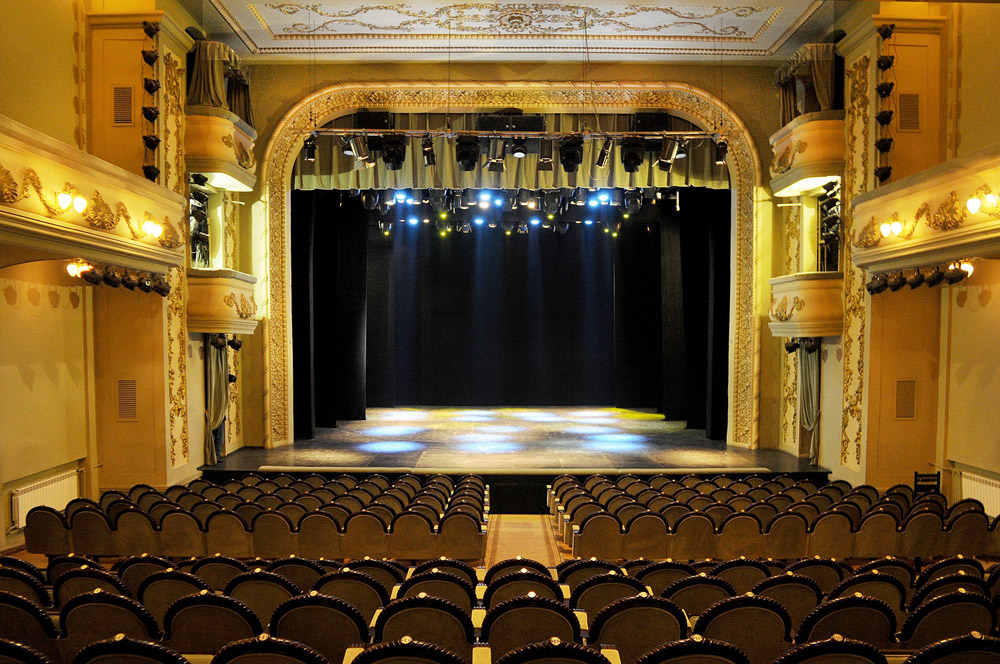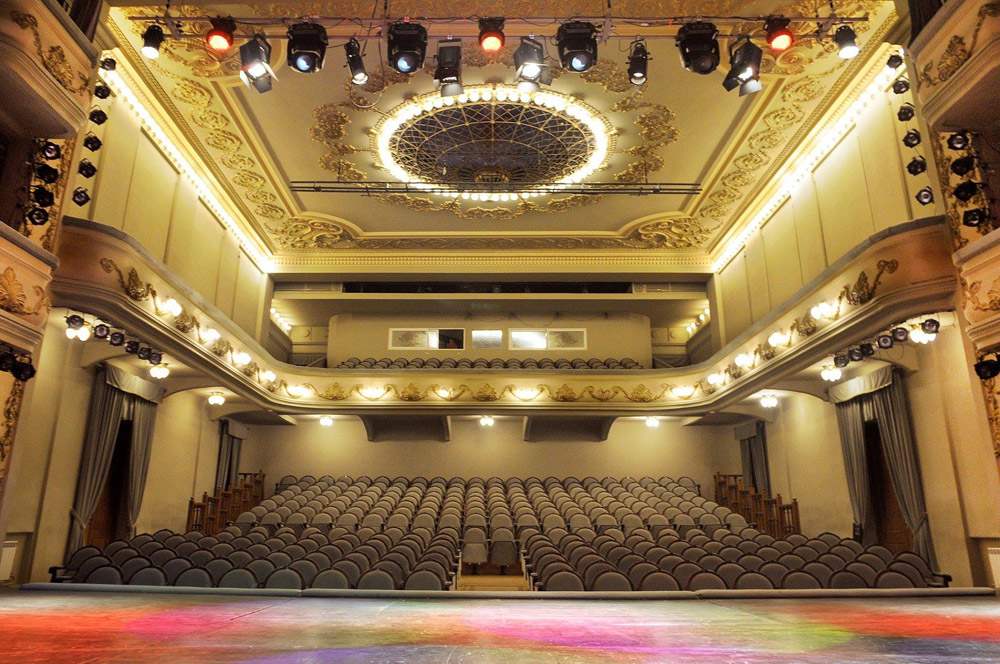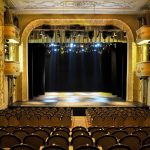Marjanishvili Theater
The roots of Georgian theatre date back to the middle of the second millennium BC. The cult of Dionysius spread widely in ancient Georgia. The proof remains in Vani, Sarkineti and Dzalisi where Dionysius Temples have been discovered, also in Uplistsikhe, the city in rock (3-2 cc. BC) where a theatre building is surrounded with its own stage, orchestra pit and the audience hall. It is clear that antique, theatrical and performing culture was very well known in ancient Georgia.
The professional Georgian theatre was founded in 1850 on the initiative of the leading representatives of the Georgian public. Its founder, Giorgi Eristavi, is a famous playwright and writer. His comedies laid the foundation for the Georgian realistic theatre. Currently there are about 40 professional theatre companies inGeorgia, but very few are subsidized by the state.
Kote Marjanishvili State Drama Theatre was established in Kutaisi in 1928 year and very soon it was titled The Second State Georgian Drama Theatre. It was founded by a great theatre director and reformer of the Georgian theatre by the name of Kote Marjanishvili. He was invited from Russia to implement theatrical reform in Georgia. Marjanishvili played a crucial role in the development of Georgian theatrical life, and is generally credited with navigating a path for modern Georgian theatre. Using established Georgian theatrical traditions, Marjanishvili created a modern theatre in which antique, classical and modern drama existed harmoniously .
In a short period of time this theatre achieved success not only in Georgia, but also in guest performances in Kharkov and Moscow.
It later moved to Tbilisi. During this period he staged productions such as: “Hopla, We’re Alive” by Ernst Toller, “ “To the Very Heart” by Shalva Dadiani, “Uriel Acosta” by Carl Gutzkow, “How” by Karlo Kaladze, “Kvarkvare Tutaberi” by Polikarpe Kakabadze, “Beatrice Cenci” by Percy Shelley, “Othello” by William Shakespeare etc During the first tours of the theatre in early thirties and after the first demonstration of it’s theatrical wealth, Marjanishvili Theatre was asked to relocate in Tbilisi (1930) and occupied the building of the public house built by the Zubalashvili brothers. In 1933, after the death of Kote Marjanishvili, the theatre was named after its founder.
In that period, Tbilisi’s intellectual life was centered on the theatre. Writers such as Shalva Dadiani, Polikarpe Kakabadze, Karlo Kaladze, Simon Chikovani and artists such as Petre Otskeli, Davit Kakabadze, Lado Gudiashvili, Elene Akhvlediani and composers such as Kote Megvinetukhutsesi, Andria Balanchivadze have all been drawn to the Marjanishvili.
From the very beginning, the Marjanishvili theatre company has been first rate. Veriko Anjaparidze, Ushangi Chkheidze, Tamar Chavchavadze, Shalva Gambashidze, Vaso Godziashvili, Sesilia Takaishvili, Sandro Zhorzholiani, Akaki Kvantaliani, Giorgi Shavgulidze -these are the names of the legendary actors who created an entire epoch of Georgian theatre.
Ushangi Chkheidze, an actor of great innate expressiveness and tragic force, was the most gifted exponent of Kote Marjanishvili’s artistic credo. The fresh, inimitable, dazzling scenic images of Uriel Acosta, Kvarkvare Tutaberi, Cenci, Iago created by him are exemplary scenic images.






